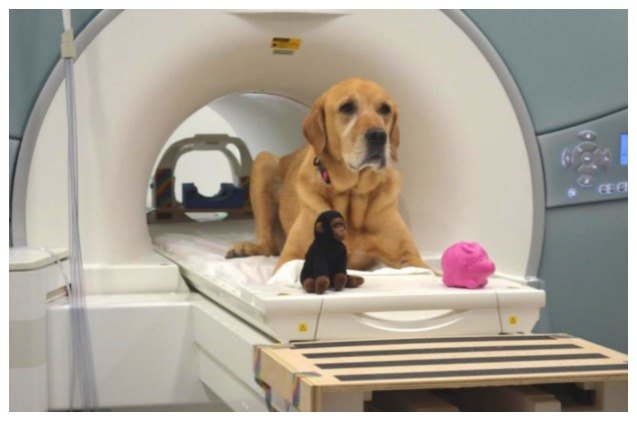Study: Dogs Able To Differentiate Between Words They Know and Don’t

We all have our ‘words’ for our dogs…we animatedly say, “Kitty!” or “Go Potty!” or “Whaaaat diiid you doooo?” as if our dogs know exactly what we mean with those words.
But, do they? Do they actually get excited because they think they’ll get to chase a squirrel up the tree or just because they know your voice and a familiar word means something familiar to them? Researchers from Emory University recently published a study that used brain images of dogs to find out.
Related: Researchers Believe Dog Intelligence May Be Hyped Up
Ashely Prichard is the first author of the study that looked to find data to support that dogs do in fact know what some specific words mean. She said that many dog parents believe their dogs know exactly what they mean when they say words, but the evidence for that being the case is fairly anecdotal. Prichard said that the goal of their study was to use brain imaging to see how dogs process words we’ve taught them are associated with specific objects.
Neuroscientist Gregory Berns is a senior author of the study and the founder of the Dog Project. The Dog Project is committed to researching the evolution of man’s best friend, and worked to train the dogs to go into a functional magnetic resonance imaging (fMRI) machine and be very still during scanning. The trained dogs amazingly did so without being sedated or held, and this study looked at how dogs process specific parts of the human language.
Berns said that we do know dogs can process parts of human language since they can obey verbal commands we give them. He adds, though, that previous research supports that ability might also be based on other factors like gazes, gestures from their owners and even facial expressions from their owners, and not just the words themselves.
The team looked at what constitutes a word to a dog, and the brain mechanisms that dogs use to decipher differences within words. They did this using 12 dogs that had been trained for several months by their owners to fetch two different objects, based solely on the names of the objects. The dog’s pair of objects had one thing with a soft texture like a stuffed animal toy and one thing with a different texture like silicone or rubber so that there was an easy way to tell if they could discriminate between the two.
Then, during experiments, the trained dog entered the fMRI scanner and his/her owner stood in front of the machine’s opening, saying the names of the objects at set intervals and showing the dog the specific toy as he/she did so. For a control factor in the study, owners also spoke nonsense words and held up other inanimate objects that did not correspond to the pair of objects they’d been trained to see.
When dogs saw the objects that had ‘nonsense’ namings, they showed greater auditory region activation in their brains than they did when they saw the words with which they’d trained and were familiar. Prichard said that this is the opposite of what humans do–which is typically to show a greater neural activation when they are exposed to known words rather than ‘new’ words.
They believe that dogs show greater activation in the brain for a novel word because they innately know their owners want them to understand what they are talking about, so they are paying close attention to trying to figure it out. The dogs may be paying more attention to the novel words to please their owners or to garner praise or a treat.
The study found half the dogs showed the increased activation in their parietotemporal cortex, an area in a dog’s brain that is similar to the angular gyrus in humans, and where differences in lexicon are processed.
Related: Researchers at Virginia Tech May Have Hope For Brain Cancer Patients
Interestingly, though, the other half of the dogs showed the activation in other parts of the brain, and the researchers believe this may differ based on breed and size of the dog, and possibly even the variations in the dog’s cognitive abilities.
Berns said that dogs have different motivations and ability when it comes to learning and understanding human words, and that they do seem to have neural connections to the meaning of words that they have been taught. It’s just past a low-level Pavlovian response, he says, and does not mean that speaking words is the best way to communicate with dogs, but does show the ability is there.
Prichard says that using a verbal command may be easier for us as humans, but from a dog’s perspective, visual commands may be even more effective and help them learn faster.

More by Lori Ennis






















